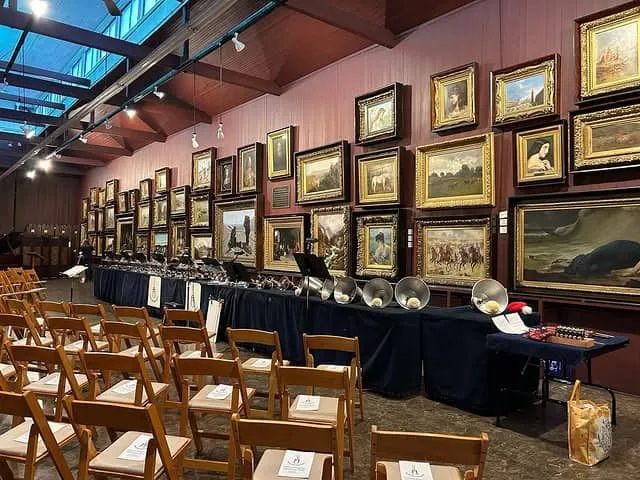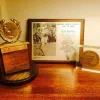
Monday Closed
Tuesday 10 AM–3 PM
Wednesday 10 AM–3 PM
Thursday 10 AM–3 PM
Friday Closed
Saturday Closed
One of Western Pennsylvania's leading cultural centers, the Merrick is home to a stunning collection of French, German, English, and American paintings from the 18th and 19th Century. Assembled by the Merrick's founder, Edward Dempster Merrick, the collection features examples of romantic, realistic, and impressionistic art by prominent American and European artists, including Prud'hon, Courbet, Winterhalter, Sully, and Hill.
The collections include: a Contemporary art collection, a 19th century library, a rock and mineral collection and a zoological collection. Among the many artifacts on view are loans from the New Brighton Historical Society. A landmark in Western Pennsylvania since the late 19th Century, The Merrick Art Gallery was established by Edward Dempster Merrick (1832-1911), a prominent New Brighton industrialist. A seventh-generation descendant of James Merrick (who with his three brothers arrived in Charleston, Massachusetts from Wales in 1636), Edward Merrick built a successful manufacturing career by patenting an "anti-dust grate" and supported his brothers Charles and Frederick efforts in restructuring their business, Standard Horse Nail.
At the age of 53, he decided to fulfill a lifelong dream to become an artist and to collect works of art. He assembled the Merrick's permanent collection during his trips abroad and through auction houses and galleries in New York City. The Merrick Collection provides a remarkable opportunity to enter the milieu of Victorian tastes - and to examine our own 21st-Century responses to the sentiments and passions expressed in these mainly Romantic works.
Featuring Landscape Painting, Marine Subjects, Pastoral Scenes, Female Subjects, and Genre Subjects, the paintings Merrick collected were intended to be his legacy. He wanted to do his part to ensure that an industrialized, democratic society would not be without the civilizing influence of the arts.




